| Your browser is not supported. | ||
|
Please browse our site using any of the following options:
| ||
How to choose footwear for hiking?
Hitting the nature trails is a great way to unwind, get some fresh air, and admire Australia's beauty. If you're heading off on a hiking adventure, getting the right boots or shoes should be at the top of your to-do list. When you're spending most of the day on your feet, having the right shoes can be the difference between having a great time, and wishing you were somewhere else entirely. Hiking boots not only provide traction to help ensure you maintain a solid foothold on the ground beneath you, but they also protect you from sharp rocks, tree roots and other potentially hazardous objects you're bound to come into contact with. They're purpose-made to support your feet on long days on the trail while also allowing your feet to move freely.
Whether you're walking for a day or a week, wearing the right footwear will make all the difference - saving you from sore feet and painful blisters. Choosing the right hiking shoes is about more than just shoe size, so we've outlined the key decision-making factors to help you pick your perfect pair.
Quick Links
- Hiking Shoe FAQs
- What are hiking shoes?
- What are the best hiking shoes?
- How To Choose The Right Hiking Shoes For You
Hiking Shoe FAQs
Will Trail Runners Work As Hiking Shoes?
Trail runners can work as hiking shoes for some individuals, providing lightweight comfort and agility on well-maintained trails. They offer breathability and versatility but may lack the ankle support and durability required for challenging terrain. Consider the specific trail conditions and your hiking preferences; trail runners might be suitable for light hikes but may not be optimal for more demanding or rocky trails.
Is It Okay To Wear Running Shoes For Hiking?
Wearing running shoes for hiking is acceptable on well-groomed trails or light hikes. Running shoes offer comfort and flexibility but again, they won’t give you the ankle support and durability that you need for tough terrain. For more demanding hikes or uneven surfaces, consider hiking boots for better protection. Choose footwear based on the specific trail conditions and your comfort preferences to ensure an enjoyable hiking experience.
Do Hiking Shoes Actually Make A Difference?
Yes, hiking shoes make a significant difference. Designed for varied terrain, they offer ankle support, durability and traction, enhancing stability and preventing injuries. The specialised design and materials provide comfort on long hikes, while features like waterproofing protect against elements. Choosing proper hiking shoes based on trail conditions can greatly improve your overall hiking experience and foot safety.
Should You Size Up Or Down In Hiking Shoes?
Choosing the right size for hiking shoes is crucial. Generally, it's advisable to size up if you're between sizes or if you plan to wear thicker socks. Adequate space in the toe box prevents discomfort and potential toenail issues during descents. However, individual foot shapes and preferences vary, so trying on shoes and considering personal comfort is essential for the best fit.
What Is The Difference Between Hiking Shoes & Hiking Boots?
Hiking shoes are low-cut, lightweight and flexible, ideal for well-groomed trails and day hikes. They offer comfort and breathability but provide less ankle support. Hiking boots with higher cuts are sturdier and offer increased ankle support and durability, making them suitable for challenging terrain and longer hikes. The choice depends on trail conditions and personal preferences for comfort and protection.
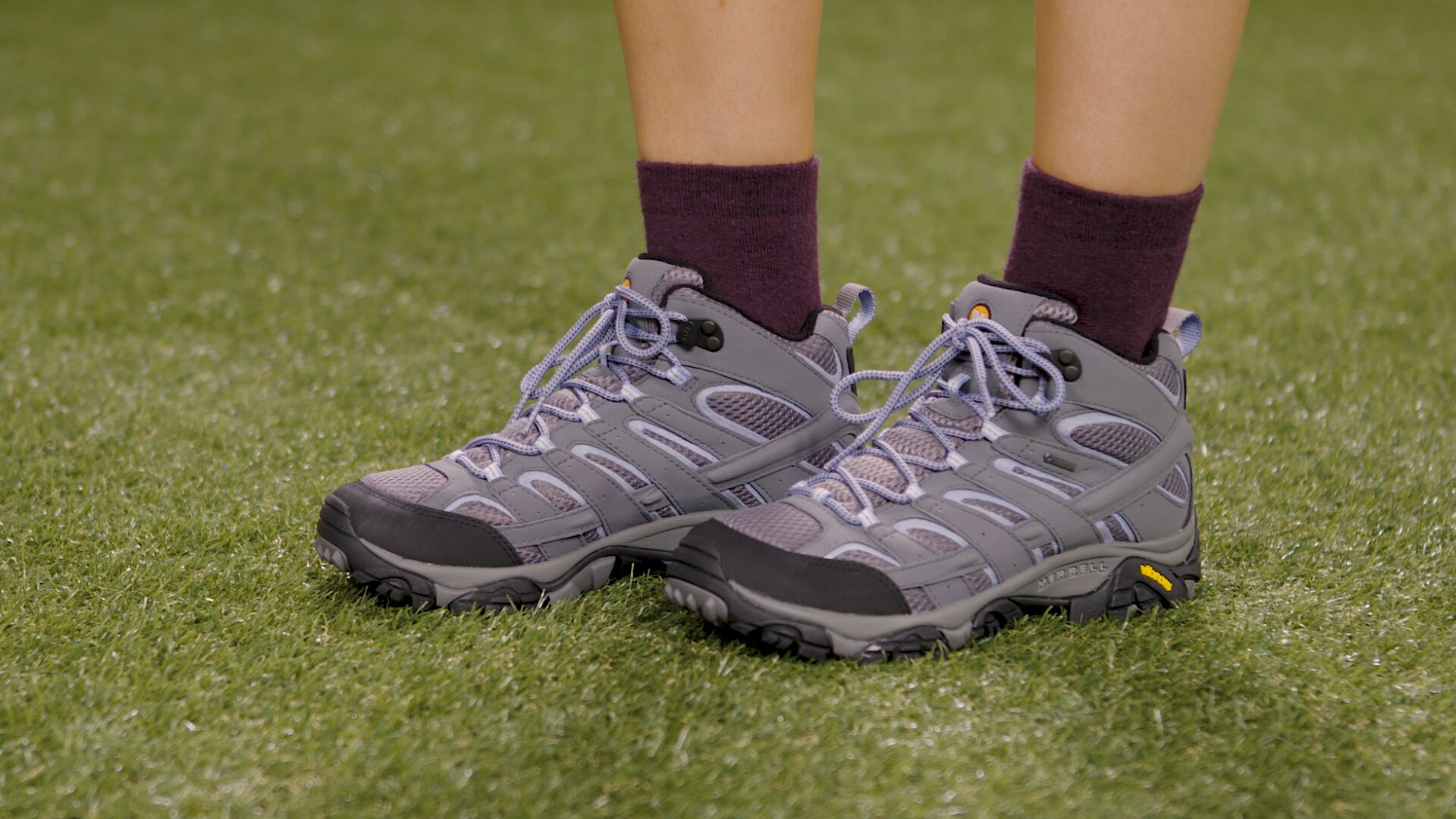
What Are Hiking Shoes?
Hikers of all ages can benefit from using hiking shoes and boots because they give your feet more traction on dirt and mud trails so you're less likely to slip. Hiking shoes with strong support protect feet from the pain of walking on rocks and roots. Hiking boots can support the weight of a full backpack so some of the pressure is off you. High-cut hiking boots give your ankle more support and stability on uneven ground. With the right hiking shoes, you can walk comfortably and happily for hours or days.
Can Running Shoes Be Used For Hiking?
While you can use trail running shoes for hiking, these won't give your feet the support they need if you're hiking long distances, trekking on rocky terrain, or carrying a heavy pack. Only highly experienced trekkers who like to hike ultra-light will choose trail running shoes over hiking shoes.
What Are The Best Hiking Shoes?
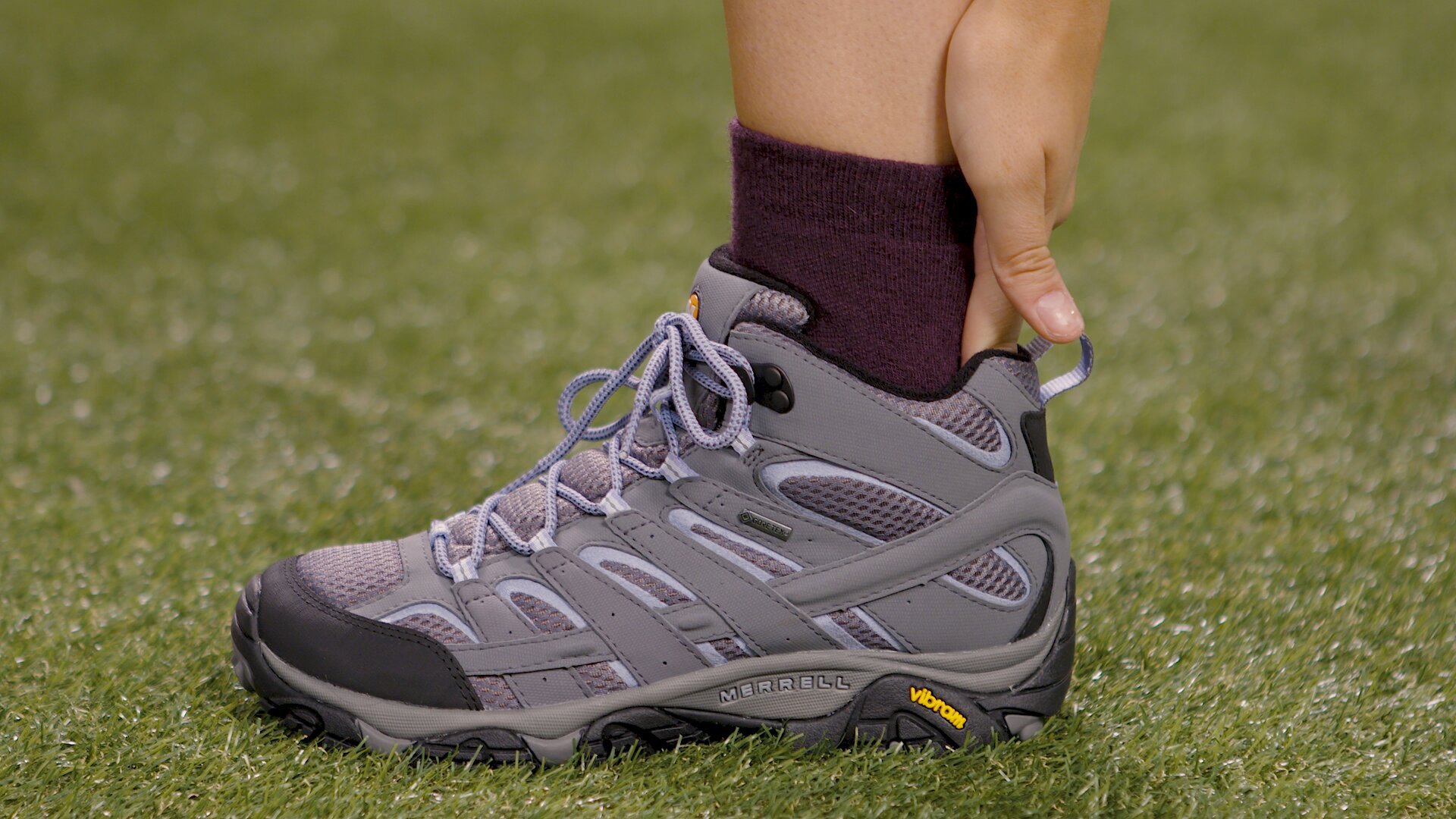
There isn't a one-size-fits-all answer. The best hiking shoes for you will depend on certain factors such as:
- How long you'll be hiking for (hours, days, a week or for a few weeks?)
- The ground conditions you'll face (will the trail be smooth or rugged?)
- How much you'll be carrying (a light day pack or a big, heavy backpack?)
- How long do you want them to last (for a few hikes or many years to come?)
Different Types Of Hiking Shoes
There are a few different types of hiking shoes which we will outline below.
Short-Ankle Hiking Shoes
The most obvious difference between hiking shoes and boots is the cut around the ankle. Short-ankle hiking shoes are low cut, making them lighter, more versatile, and great for easy day hikes and general travel. They often also have a more flexible sole than boots. Hiking shoes usually vary from lightweight synthetic or mesh uppers to sturdier (though heavier) leather options. They are the lightest and therefore add the least weight to your carrying load, and have a flexible mid-sole so bend slightly when you put your weight forward onto your toes. Short-ankle hiking shoes will give you the greatest range of movement in your ankle area (but less ankle support) and are best for short, same-day hikes on well-maintained trails, however, they won't give you enough stability for long hikes and uneven terrain.
Mid-Cut Hiking Boots
A step up from hiking shoes, mid-cut hiking boots are cut higher around the ankle than hiking shoes with just enough height to cover your ankle bone. This provides better ankle support than a shoe (an important consideration if you plan on carrying weight) but still offers greater flexibility and freedom of movement than a high-cut trekking boot. Likewise, the soles of mid-cut hiking boots usually sit somewhere between hiking shoes and trekking boots in terms of flexibility. Mid-cut hiking boots are a great option for a wide range of activities including day hikes, 2 to 3 day hikes (provided you're not carrying too much weight) and also work well for general travel, especially in colder climates.
High-Cut Backpacking Boots
Unsurprisingly, high-cut trekking boots are heavier, more rigid and higher around the ankles. This type of footwear is best suited to serious adventuring like multi-day treks over rough terrain. They offer a high level of ankle support for carrying a heavy hike pack over rough, uneven terrain. The sole has limited flexibility as this offers more support for your foot over rugged ground. High-cut hiking boots are usually heavier than other kinds of hiking boots and shoes so can weigh you down unnecessarily on shorter, lighter hikes. They're also usually less breathable so can cause your feet to heat up when hiking in warmer weather. While they're indispensable for hardcore treks, if you don't need maximum support and durability, the added weight and lack of flexibility can actually be more of a hindrance than a help, so these should be reserved for longer multi-day hikes and when carrying a heavier pack.
Parts
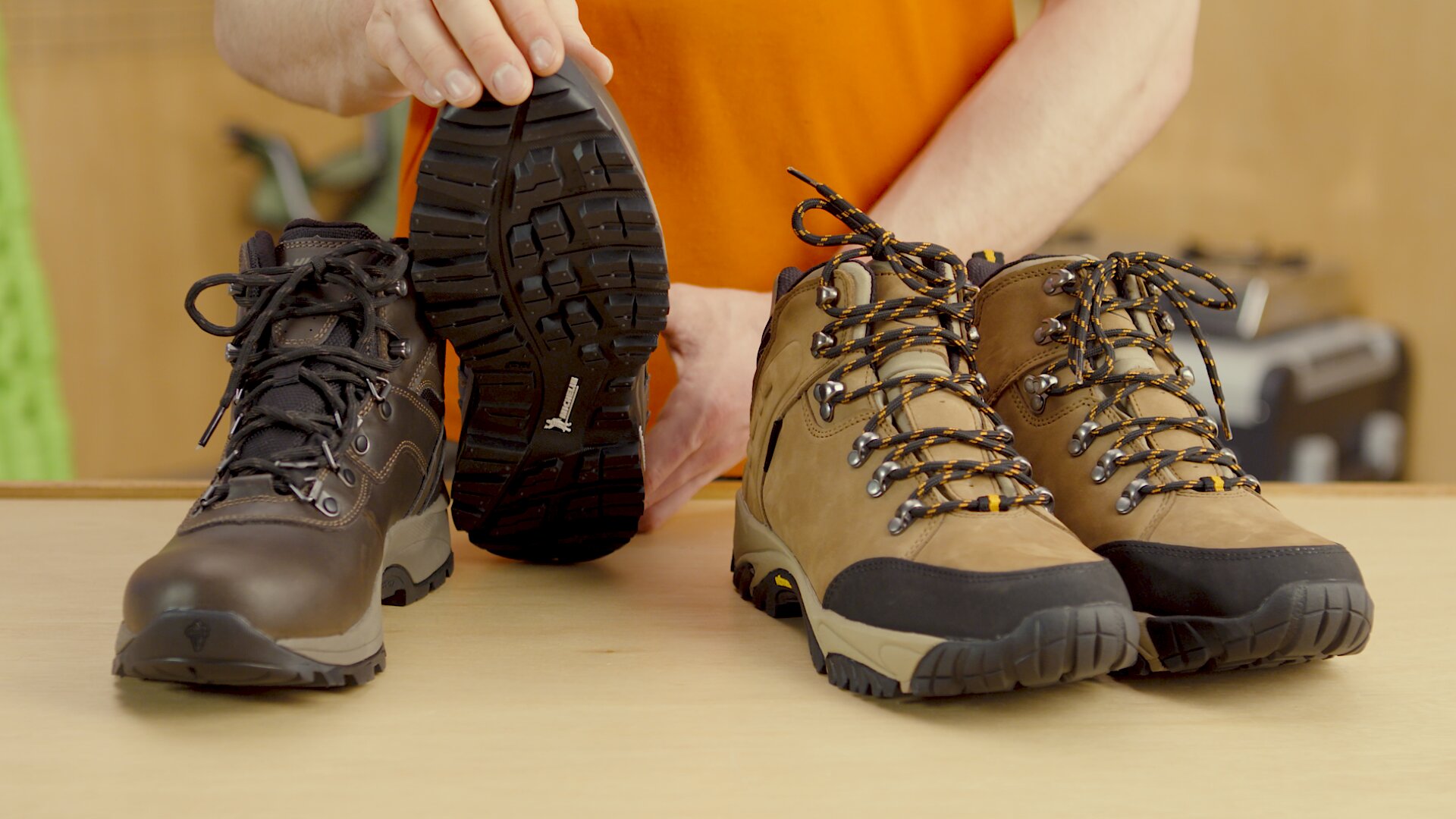
The three key components of a shoe, which we will discuss in more detail, are the:
- Upper: The top part of the shoe that wraps around the top of your foot.
- Mid-sole: The sole that sits inside your shoes and your foot sits on top of.
- Outer sole: The sole on the outside of your shoes that connects with the ground.
The Upper
The upper part determines how waterproof, breathable, heavy and long-lasting the hiking shoes will be. Uppers can be made from materials such as:
Leather
- Full Grain: Which is the most durable and suited to difficult conditions (but heaviest).
- Nubuck: Full-grain leather that's buffed to resemble soft suede, durable for tough conditions and water resistant (but takes some time to break in).
- Split Grain: Leather that's been split in two, and the smooth exterior is used to make boots lighter and more breathable for hot weather (but less waterproof and durable).
Synthetic
- Polyester Or Nylon: Breaks in and dries fast and is also light, but not as long-lasting.
- Vegan: You can get vegan uppers so you know no animals were used to make them.
- Mesh: Let feet breathe to help you stay cool in hot weather (but not waterproof).
- Waterproof Membrane: Keeps feet dry but it's not as breathable as mesh so feet can get sweaty in hot weather.
Insulated
To keep feet warm in extremely cold conditions. Synthetic insulation dries fast if it gets wet. Some uppers also have toe guards to protect your toes from rocks and boulders.
The Mid-Sole
Gives your feet cushioning and stiffness for comfort and stability. The thicker the midsole the more supported your feet are. Mid-soles can be shock absorbent with cushioning to absorb the shock when you step or jump. Mid-soles can be made from polyurethane (long-lasting and better suited to longer hikes, but heavier) and EVA (lighter and better for shorter hikes, also feels more cushioned). They have shanks that are between the mid-sole and outer sole which supports heavier loads, and have plates underneath the shanks to protect the bottom of your feet from rocks. Mid-soles can be breathable, circulating air so foot moisture doesn't cause bacteria and odours, and can be insulated (insoles with insulation are warmer because the insulation traps heat).
The Outer-Sole
The outer-sole gives your feet grip and stability on the ground as well as comfort. The stiffer the outer sole; the more comfortable feet will be because they don't have to wrap around branches and rocks. Outer soles can be made from:
- Rubber: Most outer soles are made from rubber which gives you the best grip.
- Rubber Carbon: Some have carbon added to the rubber which makes them harder and last longer than rubber (but the grip isn't as good).
They can also have a heel break, which is a gap between the heel and arch for stability on steep/muddy ground. They have lugs (the bumps on the bottom that give you traction) that are spaced far apart which gives you better grip and it's easier to clear out the mud. They are also thick and deep-set for better traction as they disperse water more efficiently.
Materials
Another important factor when choosing hiking boots or shoes is what material they're constructed from. Modern hiking boots are made from a range of materials, and all have their pros and cons. Let's take a look at how to choose the right material for your needs.
Leather
Leather offers great durability, resistance to wear and solid protection for your foot. However, leather is a relatively heavy material so is most commonly used in high-cut hiking boots or heavier mid-cut boots where support and durability are most important. Leather boots will often take longer to wear in than other materials.
Synthetics
Synthetics are becoming increasingly popular in hiking boot construction because they're relatively lightweight, fast drying and easier to break in. However, they will often wear out faster than leather boots and won't offer the same level of protection to your feet.
Synthetic/Leather Combination
Many hiking boots and shoes are made with a combination of leather and synthetic materials. In many cases, these shoes offer the best of both worlds and they provide protection where it's needed but are still relatively lightweight and breathable.
Waterproofing
Hiking shoes and boots often come with a waterproof membrane made from materials such as Gore-Tex. These are excellent if you're hiking in wet conditions in cooler climates, however a waterproof membrane will often reduce breathability in the shoe and may cause sweating in warmer weather. If you're hiking in hot climates, highly breathable shoes or boots and quick-drying socks can often be preferable to waterproof shoes.
Size & Fit
The size of your hiking shoes needs to suit your foot. Make sure you can wiggle your toes with ease on both feet. Most people have one foot bigger than the other, so fit to your bigger foot. When it comes to width, you don't want either of your feet to feel squashed in from the sides. When you walk, your feet shouldn't slide around inside the shoes. Remember that the whole of your foot needs to fit the space inside the shoe snugly and feel secure. If foot and shoe volume don't match, you can end up with blisters and black toenails. Hiking shoes fit properly when your feet feel snug and supported and don't move around inside the shoes. You should be able to move your toes around but not fit a finger under the laces when they're done up. The laces shouldn’t be tied up too tight as this causes bruising on the top of your feet, and you should be able to slide one finger behind your heel with the laces done up. You shouldn’t feel any pressure or sharpness (if you do they're too small) and your toes shouldn’t jam up at the front when you walk downhill.
Trying On Hiking Shoes Tips
Try on different hiking shoe sizes and fits in your nearest Anaconda store, and remember:
- Feet swell during the day so go shoe shopping late in the day when feet are at their largest.
- What you wear with hiking shoes affects the fit and comfort, so always try them on with any orthotics, cushions or ankle straps you need to wear.
- The socks you plan to wear when you go hiking.
Hiking Shoe-Wearing Tips
While leather boots and shoes will often take longer to break in than synthetic varieties, whatever shoes you have, it's super important to wear them in before setting off on an expedition. There's nothing worse than getting half a day into a multi-day trek to find your feet covered with blisters! For maximum foot comfort when you go hiking, break in hiking shoes at home as much as possible before you go (try with a full backpack). Also adjust the way your hiking shoes are laced during the day to reduce pressure on different parts of your foot.
Hiking Socks
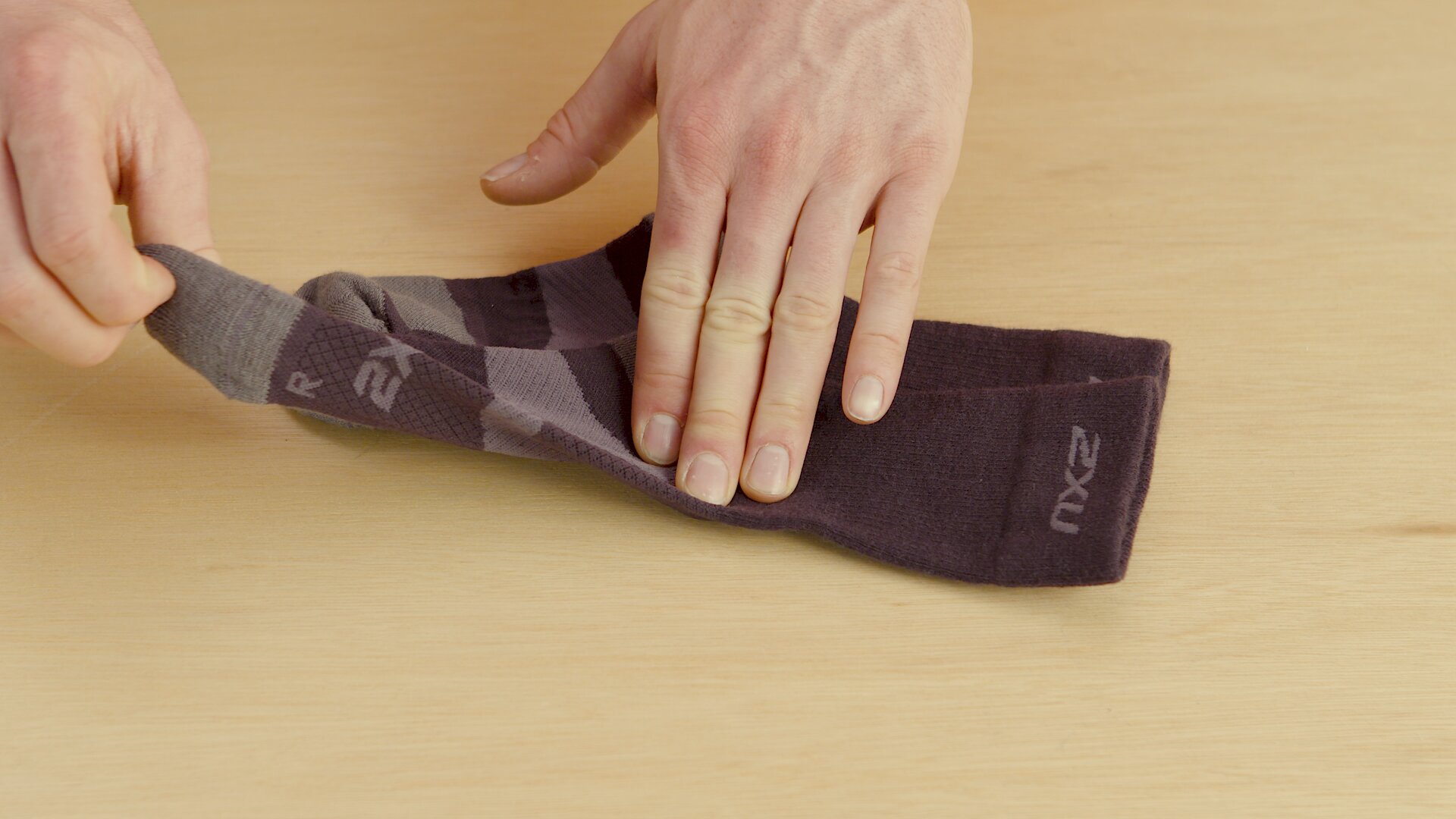
The socks you wear with hiking shoes will keep your feet warm, dry and comfortable if they fit you properly - remember that loose socks can cause blisters. They should also be able to wick sweat away from your skin, as moist socks can cause blisters. Good hiking socks should also have padding in the right places to help prevent blisters (but more padding means thicker socks and warmer feet, so keep the weather in mind when choosing socks). Make sure they are always clean and dry - only clean, dry socks every day will wick sweat away. They need to be the right height, higher than the tops of shoes to prevent legs rubbing against shoes. Hiking socks can be made from:
- Merino Wool: Most hiking socks are made from merino wool because it's breathable, soft, warm, dry (because it wicks moisture away from feet) and antibacterial so they won't smell.
- Polyester Or Nylon: These synthetic socks dry fast if they get wet but aren't as breathable so feet can get sweaty and a bit smelly over long distances or in hot weather.
Some hikers like to wear sock liners either inside their socks or on their own in really hot weather. They are typically made from synthetic, silk or merino wool, and are perfect for helping to keep their feet dry and protect against friction which causes blisters.
Quality
When you're weighing up which hiking shoes to buy, think about quality versus cost. High-cut boots are more expensive but reduce the impact of walking on your body and synthetic hiking shoes are cheaper than leather shoes but won't last as long. When it comes to how much you should spend, if you'll only do short hikes every now and then, a cheaper pair should do the trick. Cheaper shoes tend to be less shock-absorbing and not as comfortable as more expensive shoes, so you get what you pay for. If you're an avid hiker, it's worth spending more on good-quality hiking boots that will give you stability and comfort, and stand the test of time.
Find The Best Hiking Shoes At Anaconda Today
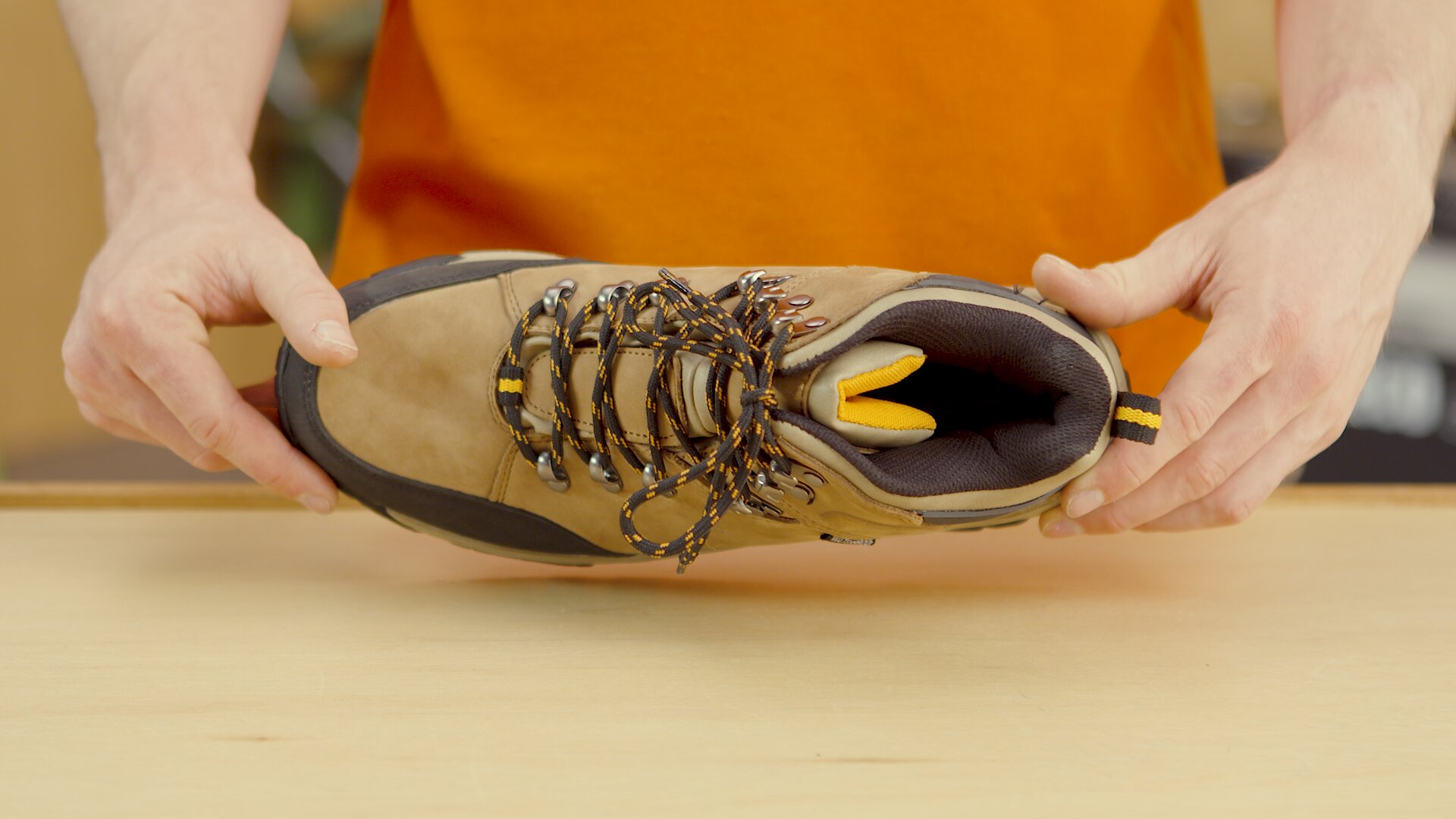
Hiking is a great way to get fit and active while experiencing the great outdoors and once you've chosen the right hiking shoes or boots for you, you'll know your feet have all the support and protection they need to take you wherever you want to go. Make sure you are fully stocked up on all your hiking footwear needs including men's footwear, women's footwear, kid's footwear and much more. Make sure you check out our Adventure Centre for more helpful tips and buying guides. If you liked our Hiking Footwear Buying Guide, then you might also like some of our other helpful articles such as:
- The Ultimate Checklist For Hiking Essentials
- Hiking Clothing Buying Guide
- Hiking Essentials Buying Guide
- Hiking Backpack Buying Guide
Find your local Anaconda store and check out our extensive footwear range for your next outdoor adventure